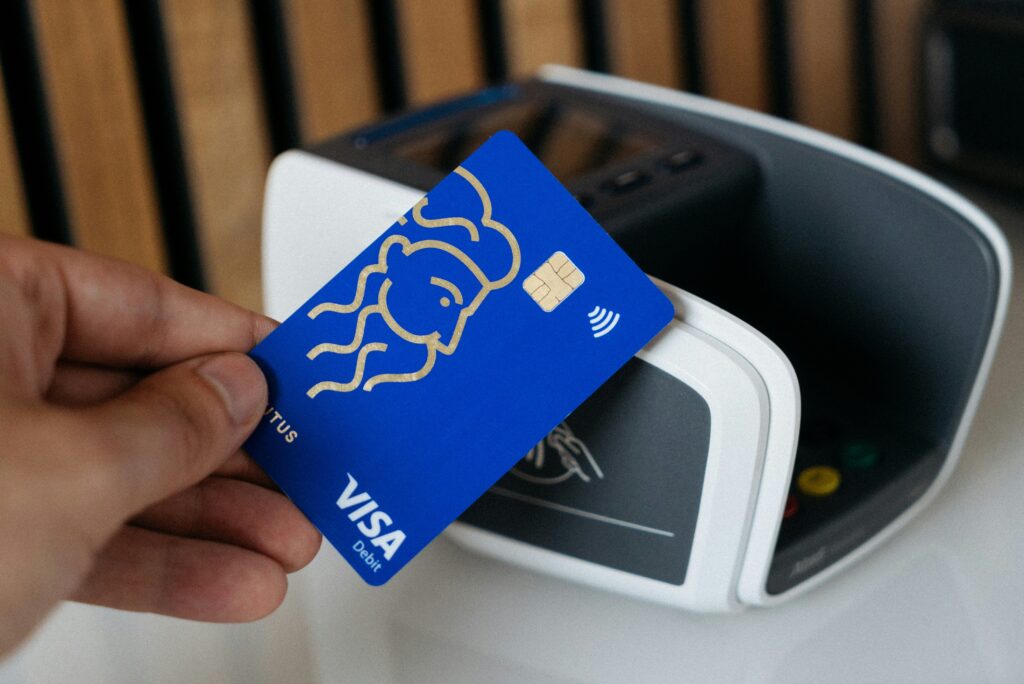2020 was already a year nobody needed more disruption — then immigration policy added its own shake-up. Between new rulemaking, pandemic-era travel proclamations, and agency experiments with electronic processes, employers and foreign workers saw old assumptions about how H-1B petitions are filed, selected, and supervised get rewritten — and then (in several cases) legally challenged. This article walks through what changed in 2020, why those changes mattered, who felt the impact most, and what practical steps job seekers and employers should have taken (and can still do) to adapt.
Short version: DHS and DOL issued a package of tougher H-1B rules in 2020 (stronger proof of “specialty occupation,” more site-visit authority, limits on third-party placements, and a push toward paying higher wages), while USCIS moved the H-1B cap to an electronic-registration system. At the same time, Presidential proclamations temporarily blocked many new visa entries. Many of the agency rules were met with quick litigation and at least one major vacatur — but the policy episode still reshaped employer behavior, counsel strategies, and how foreign workers thought about U.S. hiring risk. (Federal Register)
A quick timeline of the biggest moves in 2020
- January 9, 2020 — USCIS announces the implementation of the electronic H-1B registration process for the FY-2021 cap season (first registration window opened March 1, 2020). This was a procedural modernization with big practical effects: employers would register basic data and only file full petitions for selected registrants. (Federal Register, USCIS)
- June 22, 2020 (Proclamation effective late June 2020) — Presidential proclamation suspending entry of certain immigrants and nonimmigrants (including most new H-1B admissions) through December 31, 2020, with a handful of exceptions (e.g., national interest, food-supply roles). This was a pandemic-era restriction that abruptly frozen many new hires abroad. (Federal Register)
- October 8, 2020 — DHS and DOL publish interim final rules (IFRs) that together sought to tighten the H-1B program: stricter specialty-occupation definitions and evidence requirements, codified site-visit authority and tougher consequences for noncompliance, limits on maximum validity for third-party placements, and (on the DOL side) a reworking of prevailing-wage methodology to raise wage floors. Agencies described these as “restorations” of statutory intent and wage-protection moves. (Federal Register, DOL)
- Late 2020 — Rapid litigation: several courts stayed or vacated elements of the IFRs; on December 1, 2020 a federal court vacated the DHS IFR, and other litigation challenged DOL actions and the proclamation. The litigation created legal uncertainty and pushed many of the IFR effects into limbo even while their mere existence influenced employer behavior. (USCIS, Akin – Akin, an Elite Global Law Firm)
What the new rules actually tried to change (the headline reforms)
Below are the main regulatory levers the agencies tried to pull in 2020 and what each meant in plain language.
1) Electronic H-1B registration (procedural — but transformational)
USCIS replaced the old “prepare & mail the full petition, then hope the lottery selects you” process with a short online registration (a small fee) and a subsequent random selection of registrants. Only selected registrants needed to submit a full Form I-129 petition. That saved filing time and money for petitions not selected, but it also introduced new tactical choices: employers now had to report proffered wage, SOC codes, and other data at registration and pay attention to new timing and account-setup rules. (Federal Register, USCIS)
Practical effect: faster screening for USCIS; employers needed registration systems and paid attention to the selection mechanics for the first time.
2) Tougher definition of “specialty occupation” and more corroborating evidence
The DHS interim final rule rewrote regulatory language to make it clearer that the job must really require a bachelor’s degree (or higher) in the specific specialty and instructed adjudicators to demand stronger documentary proof — contracts, detailed work orders, and evidence showing the duties actually require specialized knowledge. That made some consulting/agency placements and loosely-defined job descriptions riskier. (Federal Register)
Practical effect: employers who hire H-1B workers for ambiguous or “generalist” roles had to create detailed job descriptions and contracts showing degree-to-duty alignment.
3) Site visits and compliance checks codified — with teeth
DHS expressly codified USCIS’ authority to conduct site visits and compliance reviews (including third-party worksites), and tied refusal to cooperate to potential denials or revocations. The rule also made clearer the scope of what USCIS could check. While site visits were already in practice, the IFR made them a formal regulatory enforcement tool. (Federal Register)
Practical effect: consulting firms and staffing agencies — particularly those that place H-1B employees at client sites — grew nervous; HR and legal teams tightened recordkeeping and client cooperation protocols.
4) Limits on third-party placement validity
IFR language limited maximum validity for H-1B petitions involving third-party placement (i.e., vendor/consultant models where the beneficiary works at a client site) to shorter terms (the IFR proposed one-year maximums for many placements). That meant more frequent refiling and closer scrutiny of employer-employee relationships in third-party contexts. (Federal Register)
Practical effect: higher administrative cost for firms relying on contracting models; more paperwork and more frequent petitions for long-running client placements.
5) Prevailing-wage and wage-based selection pressure (DOL + DHS)
DOL issued guidance aiming to raise prevailing-wage calculations (arguing some wage tiers were too low relative to market) and DHS later proposed selecting H-1B registrations preferentially by higher wage levels (ranking registrations by OES wage level so higher-paying offers had a better chance in the cap). The combined effect tilted the lottery toward higher-paid jobs and made low-wage H-1B petitions less likely to be selected (or at least more costly to rationalize). (DOL, Federal Register)
Practical effect: employers who historically filed many “entry-level” H-1Bs felt pressure to raise proffered wages or face lower selection odds; small companies and startups worried about cost and competitiveness.
6) Pandemic proclamations and visa appointment bottlenecks
Separate from rulemaking, Presidential proclamations in mid-2020 limited entry for many H-1B (and other) new admissions through the end of 2020, and consular shutdowns/appointment backlogs compounded the problem. Even if USCIS approved a petition, a beneficiary abroad might not be able to obtain a visa stamping appointment or travel to the U.S. in time. (Federal Register)
Practical effect: hiring pipelines stalled, offer acceptances cooled, and many foreign candidates delayed relocation or accepted alternative roles.
Courts pushed back — the rules didn’t uniformly stick
The agencies’ October 2020 package triggered immediate litigation. Within weeks, federal judges in key jurisdictions began enjoining or vacating parts of the rules. For example, a U.S. district court vacated the DHS IFR in December 2020, and related DOL wage changes were also enmeshed in litigation. The net result was legal uncertainty: some parts of the regulatory package never took effect; others were delayed, revised, or ultimately withdrawn. But while litigators litigated, many employers had already shifted behavior in anticipation of enforcement. (USCIS, Akin – Akin, an Elite Global Law Firm)
Practical takeaway: rulemaking can change practice even when courts later block rules — because compliance costs, hiring timelines, and legal risk aversion prompt businesses to act conservatively in real time.
Who felt the biggest impact — and how
The disruptions were uneven. Here’s who was affected most and why.
IT consultancies and staffing vendors (third-party models)
Why: the tougher specialty-occupation tests, requirements for contracts/work orders, and limits on third-party validity hit these models hardest. Agencies were explicitly targeting perceived misuse in consulting placements. Result: more detailed client contracts, more cooperation with site visits, and, in some cases, shifting business models away from H-1B-heavy staffing. (Federal Register)
Startups and small employers
Why: the wage-based selection proposals and DOL wage recalibrations raised costs and lowered odds for lower-paid positions. Small firms that relied on lower OES wage levels worried that H-1B would become unaffordable or disproportionately favor incumbents who could pay top market wages. (Federal Register, DOL)
International students and recent graduates
Why: many students hoped for OPT → H-1B transitions. The travel proclamation and cap uncertainty complicated planning; those on OPT abroad risked being unable to enter if they needed stamping. The new selection mechanics also altered employers’ calculus about filing for entry-level hires. (Federal Register)
Individual high-skill applicants (senior hires)
Why: if anything, senior/high-paid hires were advantaged by wage-based selection proposals — employers with stronger budgets had a clearer path to selection. But the site-visit regime still required careful documentation even for senior roles. (Federal Register)
Real employer responses (the patterns that emerged)
- Higher proffered wages on registrations. To game the new selection tilt, some employers raised wages on registrations and petitions — with corresponding internal HR and budget impacts. (Federal Register)
- Tighter job descriptions and documentary evidence. Employers standardized job duty language, clarified degree-to-duty mappings, and saved client contracts/work orders as corroborating evidence. (Federal Register)
- Risk-avoidance on third-party placements. Some vendors reduced third-party placements or sought longer on-payroll arrangements with clients. (Federal Register)
- Contingency hiring plans and remote options. With visa appointments and travel cloudy, employers kept remote offers or delayed start dates, and sometimes hired employees remotely until stamping was possible. (Federal Register)
What this meant for individual foreign workers (practical consequences)
- More documentary hoops at filing and (for consultants) at the workplace. Expect employers to ask for client contracts, detailed SOWs, and precise job narratives.
- Possibly lower lottery odds for lower-paid positions. If a wage-ranked selection were in force, entry-level H-1Bs would face decreased odds (employers could respond by raising wages, but that’s a cost). (Federal Register)
- Visa issuance delays or inability to enter. The June 2020 proclamation and consular closures delayed many new admissions; even approved beneficiaries sometimes had to wait abroad. (Federal Register)
- Greater employer diligence and a push for cap-exempt or alternative routes. Candidates and employers increased use of cap-exempt hiring (universities, research institutions), O-1s, L-1 transfers, or remote arrangements to bypass near-term cap and consular risks.
What actually happened next (a quick legal follow-up)
Because the rules were controversial, litigation followed fast. Courts vacated or enjoined several elements of the October 2020 package (including the DHS IFR). DHS and DOL later revised rules and in some cases delayed effective dates; separate administrations then moved to modernize or change H-1B rules again in subsequent years. The upshot: the 2020 episode produced immediate disruption, but not an unalterable new normal: legal process and later policy makers reshaped the final outcome. Still, the episode left durable behavioral changes in employers’ compliance posture and documentation practices. (USCIS, Akin – Akin, an Elite Global Law Firm)
Advice for foreign workers — how to adapt if you’re job hunting now
- Ask your employer early about their H-1B process and risk plans. Will they file in the cap? Are they willing to raise the proffered wage if needed? Do they have a cap-exempt path?
- Document everything. If your role is consulting/third-party, ask your employer to keep contracts, statements of work, and client letters that show you perform duties requiring your degree.
- Consider alternatives before or during cap seasons. Cap-exempt employers (universities, nonprofit research), O-1 visas, L-1 intracompany transfers, or remote employment for a period may be practical stopgaps.
- Plan for consular delays. If you’re outside the U.S., have contingency timing for start dates and relocation expenses.
- Work with immigration counsel for nuance. The rules are technical and litigation-sensitive; an attorney can tailor filing strategy (wage level selection, SOC code choices, LCA strategy) to maximize your odds.
Advice for employers — compliance and strategy checklist
- Update your H-1B playbook: prepare robust job descriptions, contracts, and evidence files showing specialty occupation alignment.
- Anticipate site visits: implement internal recordkeeping, client cooperation letters, and a compliance point person.
- Re-examine wage strategy: consider whether raising proffered wages is cost-effective versus alternative hiring plans.
- Use the electronic registration system efficiently: ensure accounts are set up, data is accurate, and multiple filings for the same beneficiary aren’t submitted by mistake. (Federal Register)
- Plan for contingency start dates in case visa stamping or entry is delayed by proclamations or consular backlogs.
- Talk with counsel early to test low-risk filing pathways (cap-exempt hiring, intracompany transfer, or O-1) and to prepare for litigation-driven uncertainty.
Three realistic scenarios you might face — and a short play for each
- You’re a startup offering an H-1B to a junior engineer. Expect higher wage scrutiny and lower selection odds if the government applies wage-priority rules; evaluate cap-exempt hires, raise the proffered wage only if budget permits, or plan an OPT → remote start.
- You’re a consultant placed at client sites. Collect client contracts and detailed work orders early, adopt a compliance manual, and prepare for site visits. Consider converting long-term placements to direct hires or payroll arrangements.
- You’re an international student on OPT with an employer ready to file. Ask the employer about registration timing, backup plans if you can’t enter, and whether they can sponsor you via cap-exempt routes or transfer you internally.
Bottom line: 2020 changed practice even when the courts changed rules
The regulatory push of 2020 was aggressive and broad: electronic registration, tighter specialty-occupation evidence, codified site visits, third-party placement limits, and a wage-focused selection approach. Litigation and later administrative action blunted or vacated some of those measures, but not before employers recalibrated hiring, tightened documentation, and adjusted compensation strategies. For foreign workers the practical impact was immediate: more documentary burden, possible wage pressure, and pandemic-era travel complications that had to be managed in real time.
Policy cycles and court rulings can reverse or modify details — but the era’s main legacy is a more compliance-driven H-1B ecosystem. Employers are more conservative and more rigorous in filing; candidates should plan for contingency pathways and insist on transparency from hiring organizations. If you’re navigating H-1B now, the safest posture is proactive documentation, clear contingency planning, and early counsel.
If you’d like, I can:
- Turn the above into a concise checklist for employers (compliance file + site-visit prep + registration steps).
- Draft a candidate question list to use during recruiting conversations (what to ask the HR/immigration team about filing strategy and contingency plans).
- Build a timeline explainer of 2020→2021 H-1B rule proposals, court rulings, and effective outcomes (useful if you must brief a hiring manager).
Which would help you most?




